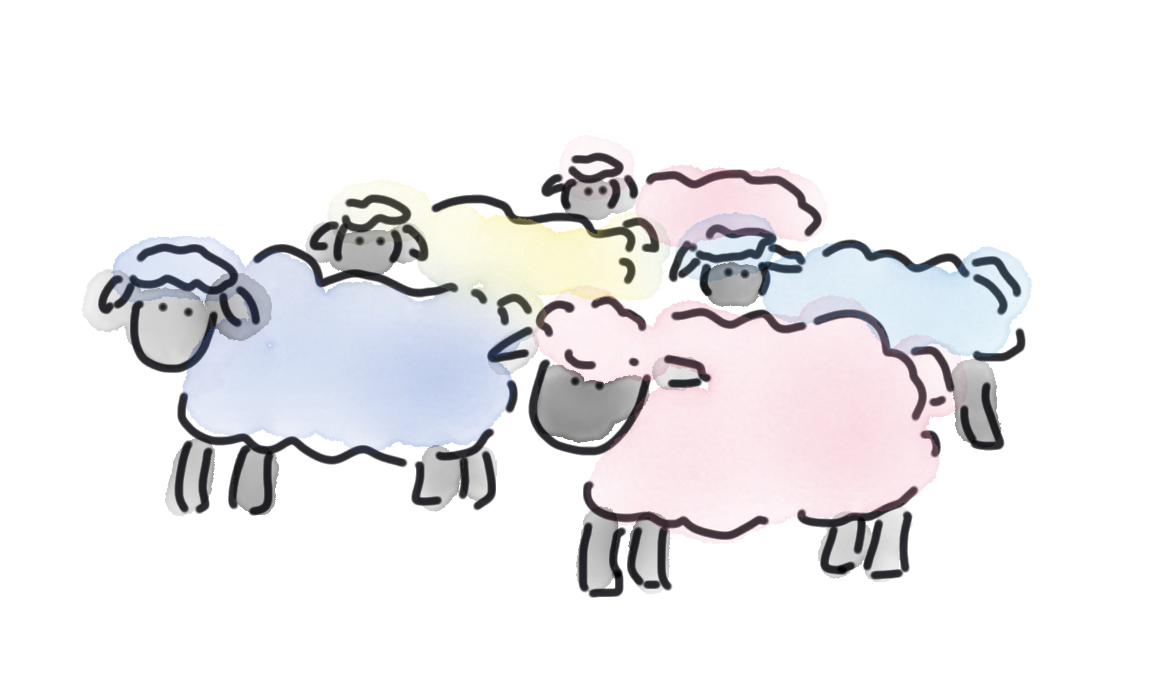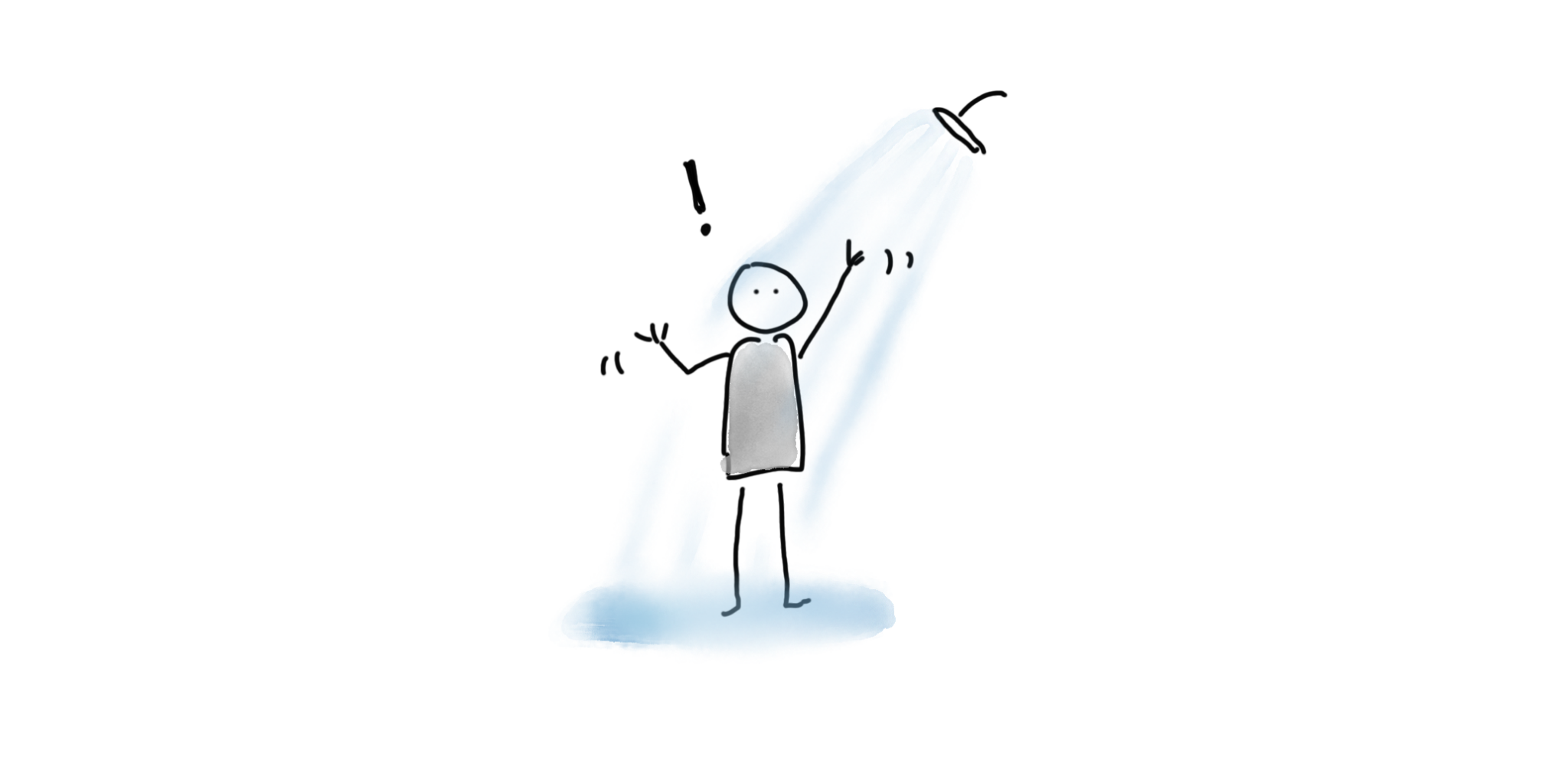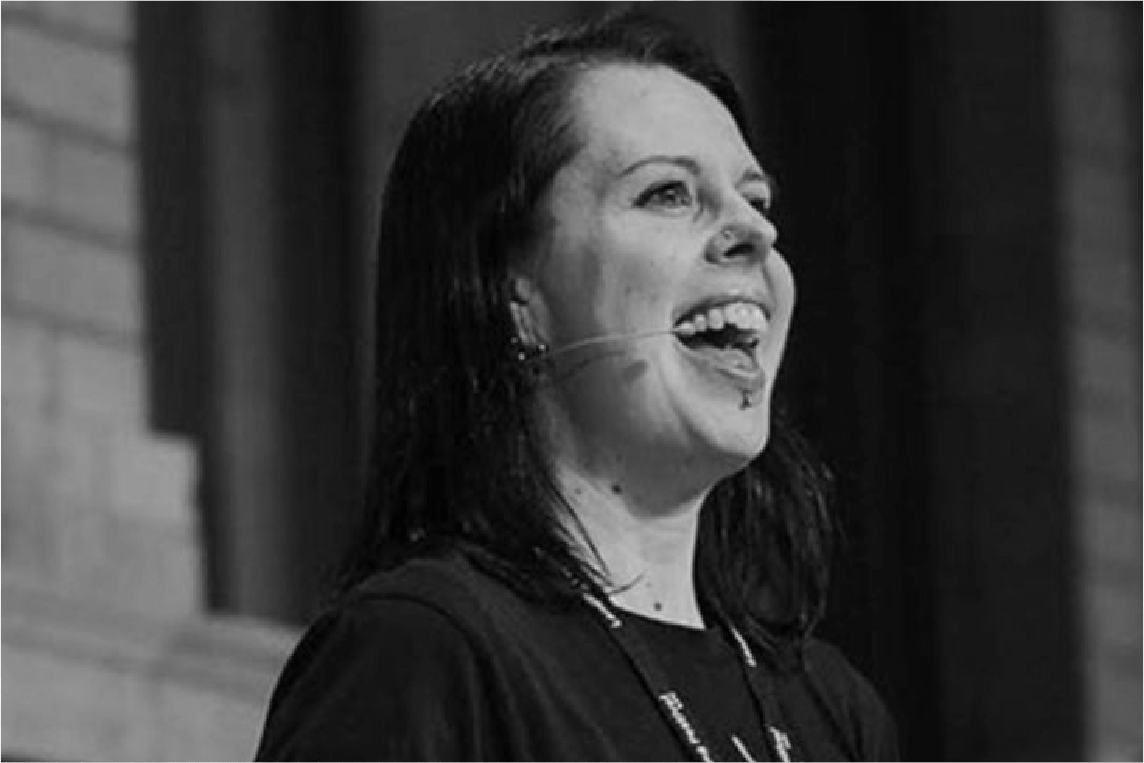We all know—in theory, at least—that the best debugging tool is a good night’s sleep. The second best debugging tool is a good shower. The third best debugging tool is a gentle run.
The other day, a friend and I were discussing our running regimes. Hers involves around 60k a week, at a competitive pace. Mine is 10k a week, at a slow pace. Unsurprisingly, she found it hard to find time for all that running. I suggested that she could work whilst running. She gave me a look that said “do you really run along typing on a laptop and how is that even physically possible and I’m not sure we can be friends anymore”.

No, I don’t try to type whilst running. But I actually do do some of my best work at eleven kilometres per hour. I’ve written talks, drafted tricky emails, and solved nasty bugs. What makes a run such a great place to work is … the absence of work.
In general, if we’re doing something which is cognitively undemanding, the brain is working less hard. This is intuitively obvious, but it can be confirmed and quantified using functional MRI scans, or fMRI. The fMRI scans measure blood flow in the different areas of the brain; more blood flow means more activity.

The default mode network
Surprisingly though, even when the brain is working super-hard, it only uses about 5% more energy than when it’s at rest. Even when it’s doing nothing, our brain is doing a lot. What’s even more surprising is that when the brain goes into idle mode, some pathways in the brain start doing more, not less. These connections are known as the "default mode network”, and they are most active when the brain is unfocussed. That is, they kick into gear when there isn’t much external stimulus, and when the brain isn’t doing something cognitively demanding.
What does the default mode network do? It was only identified around twenty years ago, so researchers are still working on figuring it out. They know the default mode network is involved with mind wandering, “mental time travel”, and perspective shifting.
Mental time travel is more mundane than it sounds: it’s playing back past events and envisioning future events, usually boring ones. For example, it might be thinking about yesterday’s dinner or an upcoming event. In other words, the reason you find yourself thinking about the day ahead in the shower or on the walk to work is partly because it’s happening soon, but it’s also because the shower specifically triggers that kind of brain activity.
Perspective shifting means thinking about the motivations of others. It’s an important part of conflict resolution at work. In the heat of the moment, it can be hard to understand why a colleague is hostile to our suggestions. Later on, while our brain is idling, we might “try on” their point of view and get an insight into why they said what they did.
As a side note, not all default mode network [DMN] activity is a good thing. Hyperactivity in the DMN is associated with the disorganised thoughts of schizophrenia and psychosis. Less dramatically, excessive DMN activity can cause unhelpful rumination over past failures and anxiety about upcoming events. When people are depressed, this rumination can create a vicious cycle in which the depression causes rumination, and all the dwelling on miserable past events makes the depression worse. Some depression treatments focus on breaking this cycle by getting the DMN part of the brain to be quiet. For example, meditation and mindfulness techniques are known to suppress the DMN. The more experienced the meditator, the more able they are to shut the DMN down.
The psychology of creativity
The DMN helps us reflect on recent events, do short-term planning, and empathise with irritating colleagues. But what about problem-solving and creativity? Why do so many of us have ideas in the shower, or figure out how to fix bugs whilst walking the dog?
By seeing how well people perform on tasks which require divergent thinking, researchers have been able to demonstrate a strong correlation between the DMN and creativity. How is creativity measured? It turns out there is a semi-standardised test known as the Alternate Uses Test, or AUT. Study participants are asked to find alternate uses for household objects, and their responses are scored on originality, volume, and range. If our DMN is suppressed because we’re paying attention to outside stimulus, we’re less creative. We might suggest that a fork could be used for stirring pasta, or holding open a window. When we’re most creative, the DMN is most active; we realise that same fork could be a stylish hair accessory, a percussion instrument, a paintbrush, a queueing system for ants. I’m sure there are lots of other uses for a fork, but I’m not able to spot them right now because I’m focussed on writing this article, rather than letting my mind wander!
When we do let our minds wander, the results can be delightful. I’ve even had good ideas during bad meetings that almost compensated for the tedium of the meeting. This is not an endorsement of pointless meetings, which are disruptive and wasteful… but sometimes, uninteresting meetings can create the right conditions for our minds to drift in interesting ways.
Our mind wanders best when we’re doing something vaguely nice, in solitude (that rules out most meetings, and also cold showers). Last week, I ended up having breakfast after everyone else had left the house, and the combination of muesli and silence was enough to spark an idea about combining the rainbow-coloured sheep of the Latitude Festival with a woolly jumper supply chain to illustrate Quarkus’ support for Pact contract testing. It’s the sort of connection I could never have come up with if I’d been staring at an IDE trying to write a demo.

For most people, showers are pleasant, and also solitary and very distraction-free, which is why many find them inspirational. A study by cognitive psychologist Scott Kaufman found 72% of people had ideas in the shower, and 14% took showers specifically for the purpose of coming up with ideas. A shower company sponsored the study, so they must have anticipated the results would show the link between showers and ideas. Shower companies aren’t the only ones seeking to commercialise on shower-creativity. The phenomenon is so common that there are even products specifically for it, such as Aquanotes (waterproof pen and paper). Karin Slaughter, the crime writer, uses them to plot her novels. I don’t have Aquanotes, but I do use the voice notes feature on my watch to make sure I don’t forget thoughts I have whilst running.
Work and the desk
Given that it can be a great professional asset, how can we harness the DMN? Many people I spoke to were intentional about segmenting their work activities to take advantage of it. Some reserved desk-time for execution and implementation, and assumed all of their strategic and creative work would be done away from the computer. Others would deploy the DMN if they got stuck. They’d prime the system by trying to come up with a clear framing of the problem, and then they’d step away from their desk and think about other things. Eventually, an idea would pop into their head. I do this too, but as well as trying to define the problem, I’ll do as much background reading as I can. My brain will then work away making connections until I can see a solution.
For those of us who bill for our time, it can be hard to know how to record this ‘non-work work’. Can we bill for time spent walking the dog, if we’re thinking about a client problem? Can we claim the whole dog as a business expense, because having a dog forces us to get out of the house and engage the DMN on client problems?

These days, enlightened enterprises aim to optimise for flow. At an organisational level, flow means removing bureaucracy, handoffs, and low-value busy work. That allows features and fixes (the inventory of a modern tech workplace) to flow as quickly as possible from the people who are producing them to the users who get value from them. At an individual level, a flow state is a period of hyper-focus. Without internal and external interruptions, we are joyful and productive and the code or words just flow.
Clearly, flow is great and we should be trying to achieve more of it. But is it possible to have too much of a good thing? Den Spier argues that as well as flow, we should have “drift”. Todd Henry calls this “strategic slacking”. I like “drift” better, partly because strategic slacking is now something we do on a messaging tool, and partly because drift and flow go together.
Drift happens when meetings wander off-topic, when we chat to colleagues over a game of table tennis, when we step away from our desks to stretch and make tea. It ruins productivity metrics, but drift supports strategic thinking, innovation, and problem solving. If we only drifted, we’d never get anything done; but if we never drift, we might not make the lateral connections we need to change the world.
As well as optimising flow and allowing drift, organisations must of course minimise toil. Toil is the worst of both worlds; it’s too cognitively demanding for minds to wander, but it’s far more tedious than a flow state. Toil keeps the hands busy and also keeps the brain just busy enough that there’s no room for anything else. Automation is our friend here; digital labour is perfect for these kinds of repetitive tasks. And because computers don’t have the same kind of default mode network as us, they don’t even need to take showers to achieve peak performance.

For the rest of us, who practise shower-driven-development, is it practical for our workplaces to replace some desks with showers? Realistically, probably not, unless we rebrand showers as “humid debug chambers”. But perhaps employers should be building in some other drift-friendly spaces, such as isolation rooms, squishy sofas, employee-tended gardens, and tooth-brushing stations. 


 Previous article
Previous article
